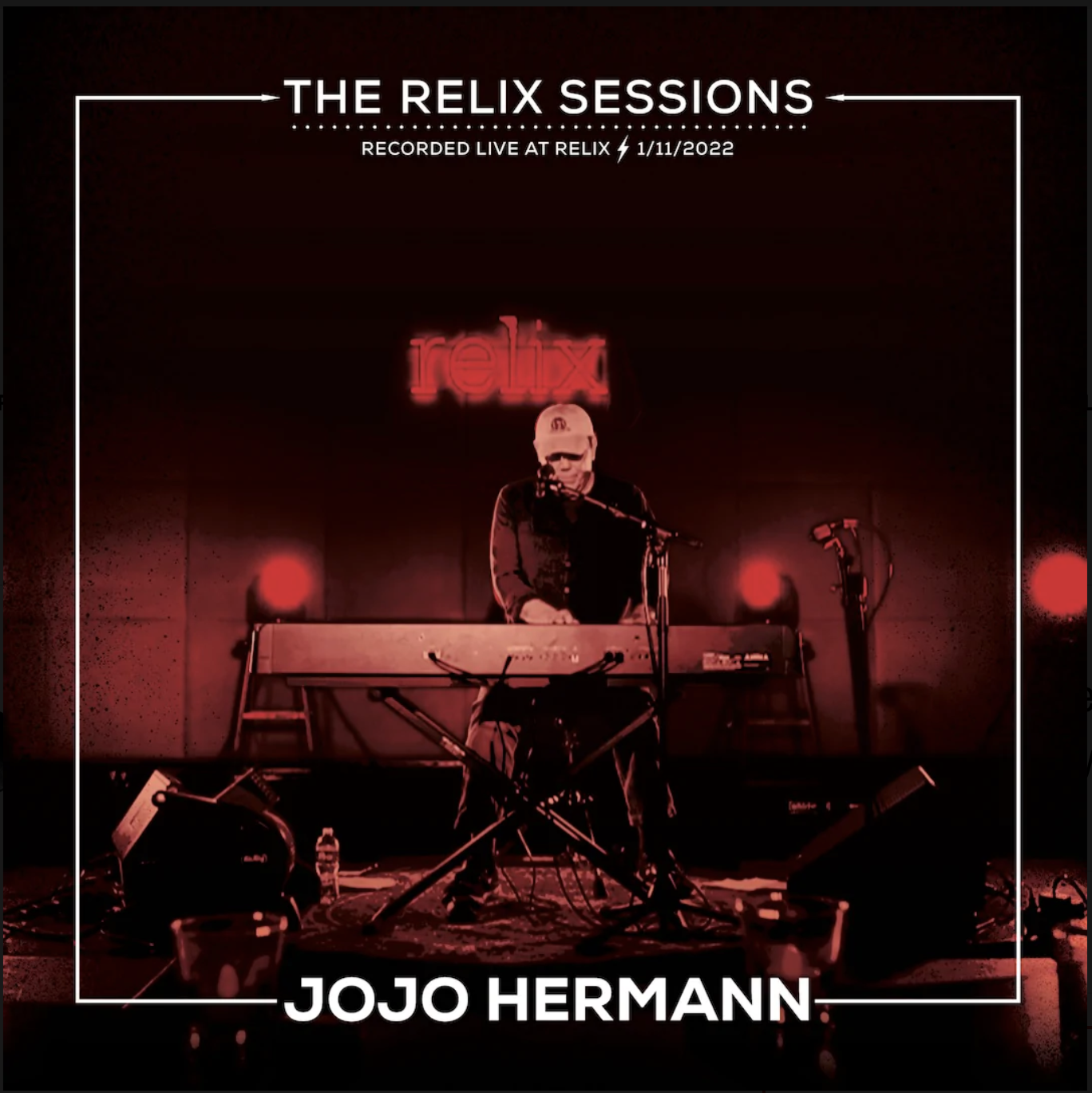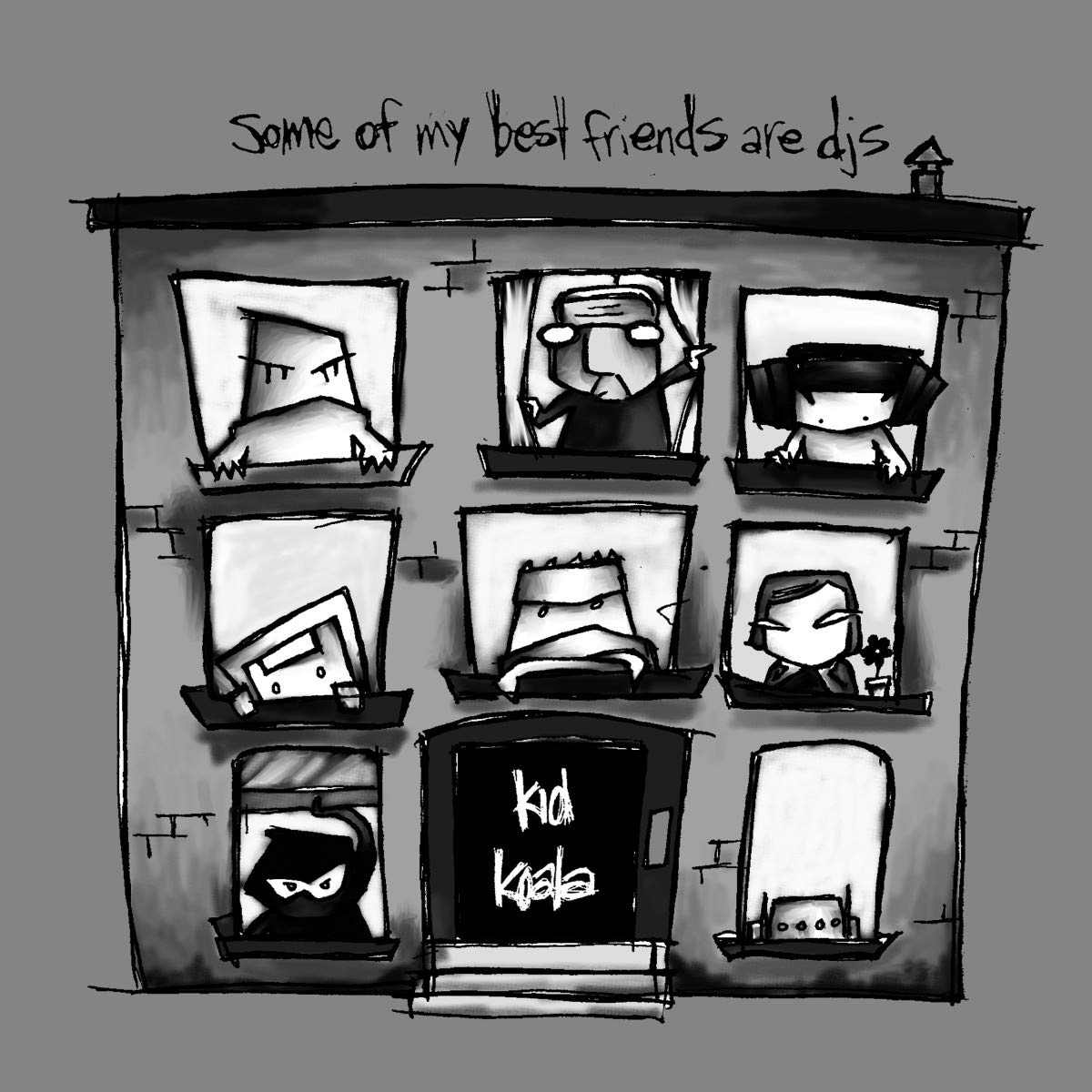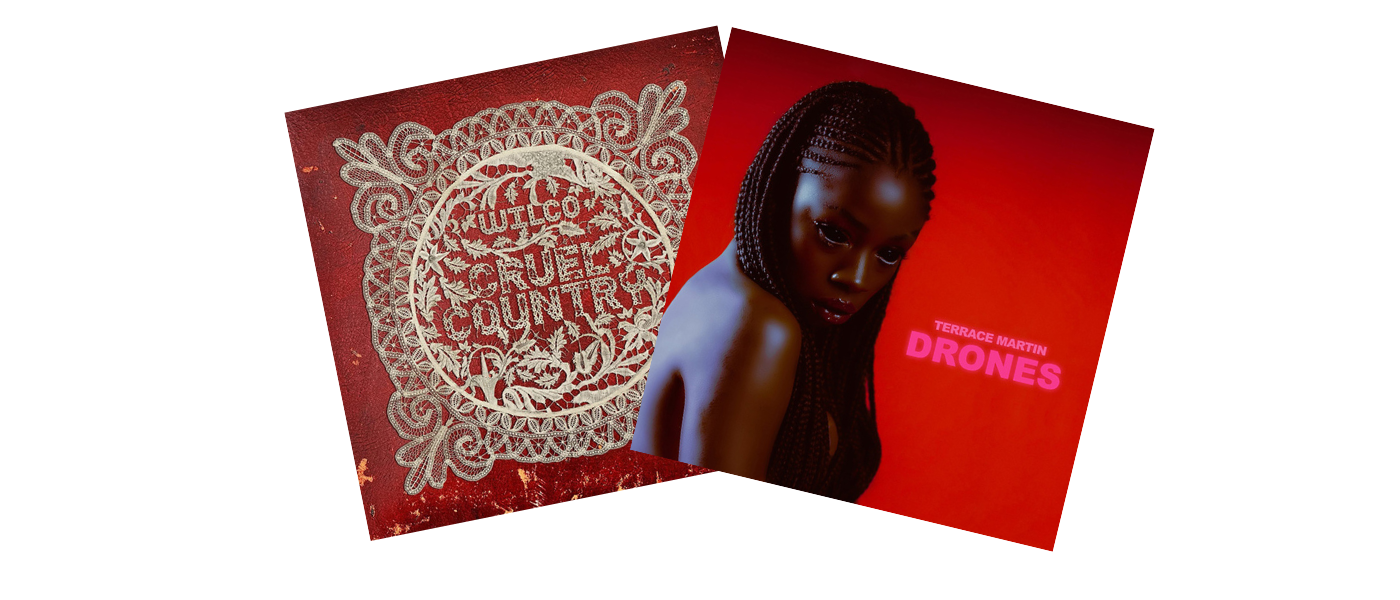
Last month’s look at Intervention’s Dillard and Clark record got me all worked up about the Burrito Brothers stuff I have. And, by extension, about Gram Parsons, in general. Recently, Sundazed reissued its take on the Parsons-led International Submarine Band’s formative Safe At Home. In mono. Again. They did it in 2011 for Record Store Day too, and that one came with a bonus 7” novelty single (“The Russians Are Coming!”).
Vinyl Me, Please notified me of the impending reissue months in advance, and I pre-ordered my copy thinking that this was an exclusive release and that it would sell out of its run of 1,000 pressings pretty quickly. None of that turned out to be true. The reissue is widely available elsewhere, and VMP is still selling copies of their “sea-glass blue” variant at the time of this writing. I’d have preferred an “adult black” version, but I bought my copy with store credit that I’d accrued through some rejoining promotion that VMP offered to lure me back into their ocean of imaginative marketing designations so… whatever. I’m happy to have it.
Here’s why:
Unlike their 2011 RSD reissue, Sundazed employed Kevin Gray to man the boards on this go-‘round. And to cut the (AAA) lacquers. The Sundazed site indicates that the original mono masters were used. The 2011 version didn’t mention anything about tapes or engineers. Also, that one was pressed, God help us all, at Rainbo Records whereas the latest was done by Citizen Vinyl (from Asheville, North Carolina). To be fair, the RSD pressing was more than passable, and Rainbo (RIP) did some occasional good work (see The Mono Collection by the Kinks) despite having been one of the more maligned pressing facilities in the whole entire world.
Most importantly, the 2023 reissue is clearer with more detail and more life in its sea-glass blue body. I assume that’s true of the standard version too. It’s worth noting that the newer take was cut louder, which can admittedly complicate the process of making a fair comparison, but I did my best to adjust for that, and I still think the latest release is preferable. It makes the 2011 run sound muffled by comparison, even at lower volumes.
Musically, there are a million highlights throughout the relatively brief Safe At Home runtime. I’ve always been partial to the Submarine Band’s cover of “Folsom Prison Blues” that they mash up with “That’s All Right,” but Parsons has some originals (“Strong Boy,” “Luxury Liner,” and especially “Do You Know How It Feels To Be Lonesome”) pointing in the direction of his more refined material to come as a member of the Burrito Bros. and, later, as a solo artist too. The pedal steel work that Jay Dee Maness puts forth gives the album much of its Country flare and is an ingrained part of the band’s sound despite his not being an official member. Without it, John Neuse’s lead guitar might tip the band fully into the Southern California Rock canyon that was widening as the ‘60s wound down. By the time of its release in 1968, several months after the recording had wrapped, Parsons had abandoned the sinking Submarine to fly with the Byrds, and the record languished.
But that don’t make it junk. It’s still a really fun listen, and an important historical document. You can’t get where you’re going with half a map, and the history of “Americana,” or whatever imaginative marketing designation you choose, would be incomplete without Safe At Home as an early road marker. Citizen Vinyl did an admirable job with this pressing. It’s almost entirely silent, and my copy only has the slightest of warps. There’s nothing objectionable here, and certainly nothing to undo any of Gray’s expert meddling. The VMP variant is a few dollars more than the standard issue. It’s numbered (but not by hand, like the 2011 version was), if that’s important to you. You should get one from somewhere. It pairs nicely with the Dillard and Clark reissue that we discussed last month. Grab the Burritos debut by Intervention, and you’re well on your way to being transported to a simpler, sunnier sonic good time.

I miss my time in Athens, Georgia – and the music there – the way I imagine Chet Baker missed his teeth after that incident in the Fillmore District. Some of my favorite bands are from Athens, and two of those have extensive vinyl catalogs. To the best of my knowledge, I have everything that’s ever been made available on wax by Widespread Panic and the Drive-By Truckers. I’m missing some of the offshoot bands (I don’t have the Stockholm Syndrome record that David Schools plays on, for example), but I have the few solo albums available from the principal members of both bands. And the singles. And the 10 inches.
Anyhow, I noticed recently that Jojo Hermann, Panic’s keyboard man, had a thing out on Relix Magazine’s vinyl imprint. Seems it’s part of a series called The Relix Sessions. Looks like they only press 500 copies of each title so I jumped on Jojo’s quick. A few weeks later, his Session is still available on the Relix site as are most of the others except for the ones by Goose and Billy Strings. (At this point, Billy Strings could record himself blowing into a toilet paper roll and 500 copies would sell out in pre-order. Dude is all the way big.)
I’m way outside of my comfort zone with regard to ordering from mystery labels these days. I had to have the Jojo record, as outlined above, but I went in with modest expectations and was rewarded for having done so with a controlled blood pressure spike when my first copy arrived dish warped. Such that the center label was the only thing making contact with my platter. My replacement copy isn’t dished, it’s just slightly warped, nothing that a reasonable buyer would pursue a replacement about. Not great, but okay enough. It plays. Still, this continues a recent trend that’s as gruesome as a South Korean horror movie.
It’s worth mentioning that I had about $150 tied up in warped records that required correspondence with various labels and retailers recently. And I’m not talking about slight warps or even “noticeable” warps. All of these issues were amicably resolved, except for one wherein a label head experienced a Trumpian meltdown, insults included, but without the patented pejorative nicknames. This person’s angle is that warped records are part of today’s vinyl manufacturing landscape, and there’s nothing to be done about it except to “not release records.”
I’m still in the process of gathering information about this. Until now, I’ve wondered if this plague was a result of mishandling by distributors or mail carriers versus issues at the pressing plants. I’ve reached out to another label head who uses the same pressing facility (RTI) as Chief Meltdown, and their stories differ. More to follow…
Back to Jojo’s thing:
Beyond the slight warp, the pressing is mostly fine. A little surface noise at the start of the second side courtesy of Third Man Pressing, a facility that has turned out some beauties and some banshees. This one’s mostly fine. We’re not in the realm of the audiophile here, and the record isn’t advertised or priced as such. It sounds best with the volume juiced, it’s difficult to hear any detail until you crank it a bit. Sounds like the recording was made in front of a small studio audience, I’d imagine with a DAT setup.
The songs and performances are where it’s at. This is a rare chance to hear rearranged versions of some Panic faves like “Big Wooly Mammoth” and “Tall Boy” in an intimate, live setting. And a comparatively straight version of one of my all-time darlings “All Time Low.” Hard to argue with that. It’s also neat to hear Jojo banter a bit between songs as I don’t think I’ve ever heard him speak at a full-band show. He makes Dylan seem loquacious by comparison.
Jojo’s wry lyrics and barroom vocals are always engaging, but he demonstrated neither in the band for the first few years of his tenure. It was his piano playing that got him the gig. Boiled in a pot of New Orleans fish water, and served hot with a side of New York gristle in the cornbread. And that’s what drives The Relix Sessions too. It’s essential for Panic fans, and a stone groove for fans of Big Easy hammers on strings. Just know what you’re getting yourself into before you jump in the kettle.

There’s a lot to love about living in the San Francisco Bay Area. There’s also a lot of excrement and crime, and a dizzying array of imbecilic choices by civil servants to ponder at all times. For this resident, proximity to the SFJazz Center – and the programming there – makes almost all of the challenges worth the pain while consistently providing an ever-expanding highlight reel of life-affirming performances to house in the ol’ memory bank. Being able to walk to the venue from my apartment adds extra value to the ability to ambulate. It’s a jewel. A restorative oasis in what can seem like a desert of human tragedy as it relates to citizens of one socio-economic demographic, and seeming indifference by governing bodies.
A few months back, I began noticing promos on the Center’s site for a performance by Kid Koala. I was vaguely aware of the name. I knew that he was a “turntablist.” (While the term sounds silly, it’s of value to me for separating a performer who cuts and scratches from one that stands behind their rig all night making that endless looping motion with their chronically raised hand.) In retrospect, I can’t, for the life of me, figure out why I wasn’t more intrigued from the jump, but I sort of glossed over it until all five shows were almost sold out. Then, I looked a little closer at the messaging and began frantically searching for tickets until one came available. I should have known I was in for something special because that lone obtainable seat happened to be my favorite one in the house.
Man! I had no idea what joy awaited me. Somehow, this guy got it in his mind to write and design a “live graphic novel,” coordinate a performance of it involving puppets, puppeteers, twelve miniature set pieces, videographers, himself, a string trio, and a music director, and then he had the wherewithal to get the idea out of his head and onto multiple stages across the universe. The puppeteers did their thing amongst the set pieces while the video crew projected the images of what was happening onstage to a screen above the action while Kid Koala and the other musicians provided the live musical score. No prior footage was utilized, and everything was done live. The show was shot so that the puppeteers’ hands were almost always out of frame. If you watched the screen, it seemed like you were watching a stop-motion animated movie. If you watched the stage, you could take in the whole crew and marvel at the unbounded creativity and vision required to pull something like this off.
Kid Koala stood behind his three decks amongst keyboards, a little drum kit, a clarinet, a guitar, and a million other things that I can’t recall now due to sensory overload and old age. He played them all, and he played them well. The show was called The Storyville Mosquito, and my favorite part involved the titular character’s trip with his date to a music museum that had the Sgt. Pepper’s outfits on display (string quartet music) next to Run DMC’s (turntable workout). I wept before the opening credits concluded. I was, and remain, moved.
So much so that I bought three Koala records in the lobby. Got two of them signed. Music To Draw To: Io (2019) is moody, meditative stuff seemingly designed to facilitate engagement in a quiet, creative endeavor. Carpel Tunnel Syndrome (2000) and Some Of My Best Friends Are DJs (2003) are Hip-Hop instrumental moonshots. Both Hip-Hop records were repressed at MPO in 2013, and both are still semi-readily available. Interested buyers might have to go directly through the artist’s site or, better yet, seek out a show and buy them in the lobby, but they can – and should – be had.
The creativity that was on display during the Mosquito performance can easily be located within the grooves of the records. DJs even starts with what sounds like a sonic precursor to the Jazz-inspired Storyville show to come. Sort of a lazy clarinet-flavored thing suggestive of New Orleans’ more refined side. There are also harmonicas amongst the samples, and the samples are often hilarious. Lots of dialogue. Sounds like Koala raided a library of weird informational films from the ‘50s or something. But don’t be fooled, the dude can groove too. I’ve got my antennae up for when he plays anywhere within a thousand-mile radius of where I’m standing. I want in. All the way.
These records are sonically pleasing on top of their artistic merits. They’re solidly produced and well-made with minimal pressing defects, although one could get thrown by the vinyl static apparent in some of the actual samples. I’m just now realizing that I didn’t come here for a song-by-song breakdown or even a full-blown album review. I think I just wanted to help get the word further out about a working artist that I consider a creative genius. Positivity and imagination seep from Kid Koala’s very being. He’ll have a new one out in April. The gatefold artwork will actually be the playing surface for a board game and will come with game pieces, dice, and cards. Obviously. Singles are trickling (and tricking) out now, and they’re a blast. I’m already looking forward to what comes after that…


